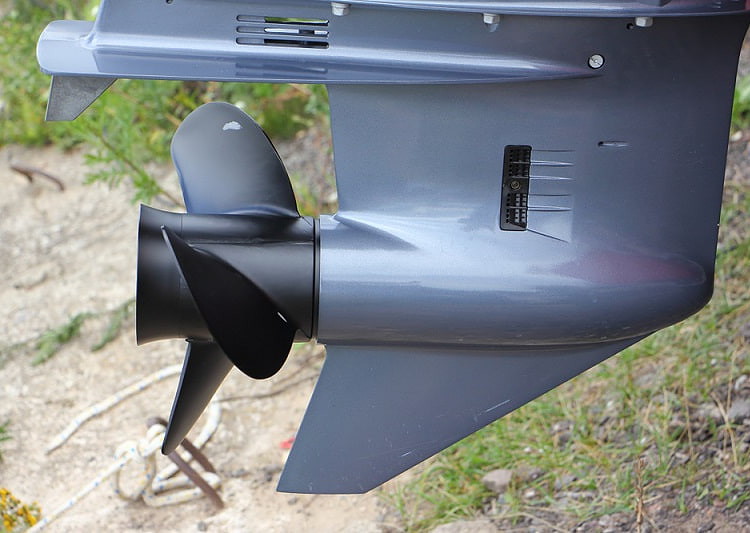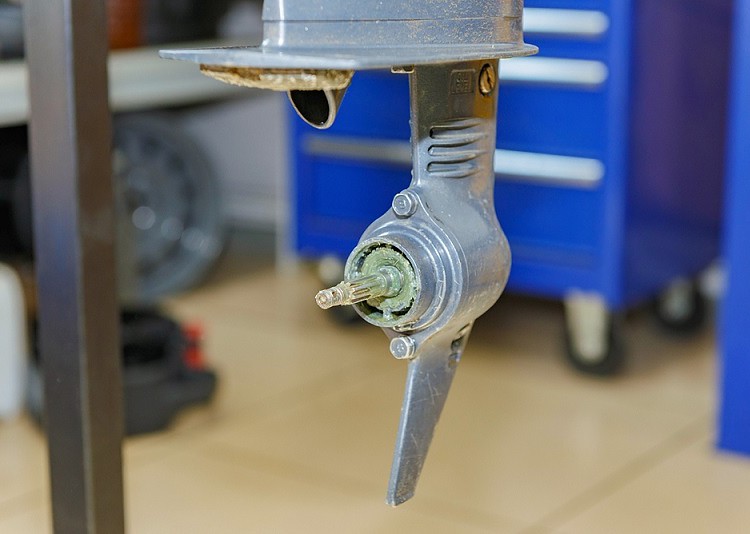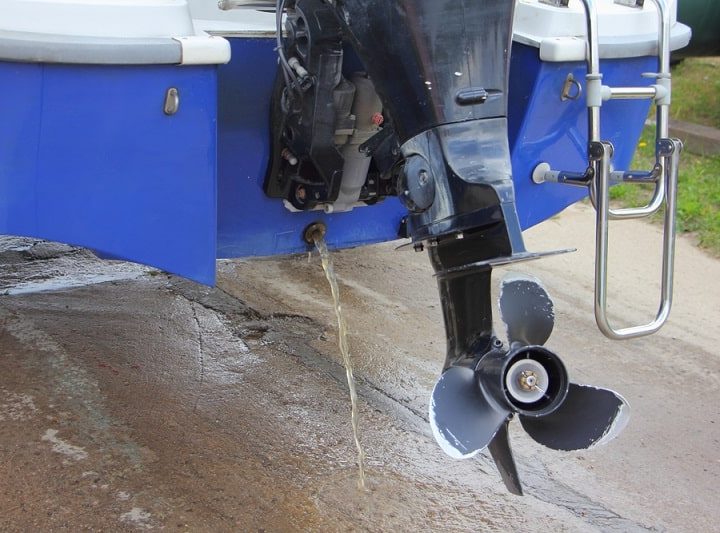You’ve identified damage to your outboard motor’s lower unit, and you’re wondering if it’s possible to still hit the lake this weekend.
Or maybe you’ve just purchased a used outboard and the lower unit is missing.
Or perhaps you haven’t yet installed a newly-purchased outboard and you’re wondering if you can run it without the lower unit long enough to make sure it will actually fire up.
Whatever the reason, you’d like to know if it’s possible to run an outboard motor without the lower unit.
Great question!
Let’s dive into the answer, shall we?
Table of Contents
What is the Lower Unit of an Outboard Motor?

An outboard motor’s lower unit is also called the gearcase. Simply put, it is the part of the motor that gets submerged in the water.
The outboard’s engine supplies power to the lower unit, which then uses this power to pull water through the system and turn the propeller.
Both of these actions are essential for a properly functioning motor.
The lower unit contains several key components, including:
- Driveshaft: The driveshaft is the part that transfers power from the engine, or powerhead, down to the gearbox and the water pump.
- Shift shaft: The shift shaft controls the gear of the outboard motor. It controls your propeller by allowing you to shift between forward and reverse.
- Gearbox: The gearbox contains the actual gears that make shifting between forward and reverse possible. It also houses gears that connect to the driveshaft, converting its vertical power into horizontal power that moves the prop and prop shaft.
- Propeller: The propeller, as well as the prop shaft, are also important components of the lower unit. The prop shaft moves the prop forward or backward according to whatever gear the motor is operating in.
- Water pump: Most outboard motors use water to keep the engine cool. The water pump located in the lower unit pulls water into the motor and pumps it through the engine, preventing it from overheating.
If any of these parts become damaged, the functionality of the entire motor may be compromised.
Can You Run an Outboard Motor Without the Lower Unit?

Technically, the answer is yes. But that doesn’t mean it’s a good idea.
You don’t have to have a lower unit installed for the outboard’s engine to run.
If your lower unit is damaged or, for whatever reason, you want to try running your outboard without it, the engine will start up.
But there are several reasons why it is a bad idea to run an outboard motor without the lower unit.
- You’re not going to go anywhere: Since the lower unit contains the propeller, it would be completely pointless to try and operate without it while you’re out on the water. Your boat isn’t going anywhere without that propeller.
- The engine may overheat: Since the lower unit is responsible for pumping water through the engine, operating without one will quickly cause the motor to overheat. It needs the water constantly flowing over it to wash away the excess heat it produces.
- Lack of oil pressure may cause the engine to seize up: In many outboard motors, the driveshaft pumps oil throughout the engine. Without the lower unit, you will have no driveshaft to provide the necessary pressure, and the engine will quickly seize up if it isn’t receiving the oil it needs.
What’s more, there aren’t many good reasons to run your motor without the lower unit; doing so is simply unnecessary.
The only time you might need to do it is when you have the rest of the outboard disconnected from the lower unit because you are trying to identify a problem, or simply trying to make sure the motor actually starts before you install it on your boat.
In these cases, you should only run the motor for several seconds up to a couple of minutes. Turn it off as soon as possible.
FAQ:
Let’s take a look at some questions that frequently come up regarding an outboard motor’s lower unit:
Can You Run an Outboard Motor Without Water?
As mentioned above, most outboard motors are water-cooled. The water pump on the lower unit pulls up water into the engine, circulates it through to keep the engine at an optimal operating temperature, then sprays the water back out.

It is technically possible to run an outboard motor for a couple of minutes out of the water, but doing so is not recommended.
Not only will the engine have nothing to keep it from overheating, but the water pump may be damaged because it will be rotating at high speeds with no water to keep it lubricated.
If you have to run your outboard out of the water, never do so for more than a minute or two unless you are using a hose adapter or motor muffs , which will allow you to circulate water from an external source, such as a garden hose or bucket of water.

Can You Run an Outboard Motor Without a Propeller?

It is possible to run your motor briefly without a propeller, though doing so is not recommended. As with running your motor without water, running it without a propeller may damage the engine.
The propeller provides resistance, or load, which keeps the engine operating at or below the recommended RPMs. Without this load, the engine will spin much faster, easily exceeding the maximum RPMs.
As you might imagine, this will quickly wear down a number of components within the engine, causing it to fail before its time.
If you have to operate the motor without a prop, you should only do so for a few minutes, and make sure the engine doesn’t exceed the maximum RPMs.
Conclusion
It is technically possible to run your outboard motor without the lower unit, but doing so could cause irreparable damage to the engine.
If you have to do it, only run the motor for a minute or two. This should prevent it from overheating or seizing up due to lack of oil pressure.

Sarah Hood has been writing for Anchor Travel since 2021. When she’s not writing, she enjoys cooking, singing, and spending time in the great outdoors.

